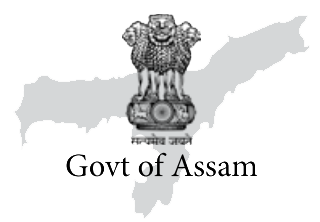Road Map 2026 aims to achieve key development objectives, setting clear goals for every Government department. The Chintan Shivir held in September was the starting point. The political leadership and top officials sat together to identify areas that needed inter-department coordination, recognized constraints, and estimated required resources. This was definitely a ‘whole-of-government’ approach that augurs well to achieve desired outcomes. The dynamic Chief Minister Himanta Biswa Sarma has rightly stressed the need for a systematic follow-up since this is where most plans falter in implementation.
At the granular level, what does the ordinary citizen want? A better Quality of Life? Neighbouring Bhutan focuses not on GDP (Gross Domestic Product), but GNH (Gross National Happiness), an index now accepted by the World Bank. This has four major factors: sustainable socio-economic development; conservation of a vibrant culture; environmental protection; and good governance. Similarly, the 17 Sustainable Development Goals (SDGs) of the UN also focus on citizen-centric outcomes such as Health, Education, Livelihood opportunities, protection of Biodiversity, and ensuring Access to Justice.
The 20th century was obsessed with economic growth, regardless of the collateral damage caused to the environment, the increase in inequalities or breakdown of communities. In the 21st century, there is a realisation that such growth models are not sustainable, and do not necessarily improve Quality of Life.
In Assam, the British drive to cultivate tea for their economic benefit, destroyed verdant rain-forests, particularly in Upper Assam. Today, there is an increasing population of ex-tea tribes, a number that can be expected to increase with mechanisation of the production process. At the same time, there are competitive pressures with tea cultivation expanding to countries without the historical constraints and costs faced in Assam. This impacts on the ability of this sector to maintain value of output and provide employment. Likewise, extraction of minerals like oil and coal have aggravated degradation of the natural environment, though these provided resources invaluable for an industrialising India. With the present emphasis on renewable energy sources, and dwindling known reserves, the potential for expansion of the non-renewable energy sector in Assam is limited. None of these can yet be called “sunset sectors”. Yet, it is time to look for alternatives that provide more sustainable economic growth and livelihood opportunities.
Assam and NER has a wealth of biodiversity, and a rich multi-cultural heritage. This has enormous potential given the present-day demand for ‘experiential’ and ‘nature’ tourism. Heavy investment by the State is not required. It simply has to facilitate building up of transport connectivity, and micro-capacity by communities and individuals. Similarly, handloom products are no longer on the fringes, but can serve high-end markets, with guidance on contemporary designs and supply chains. There is great emphasis on building up the ICT sector today, with many States investing in the infrastructure needed for seamless global connectivity. Assam cannot lag behind. At the same time, traditional skills are still needed. A special effort to upgrade ITIs to build up such skills can create livelihood opportunities for the State’s growing cohort of school–leaving youth. MSMEs are not as glamorous as big-ticket investors but provide a decent livelihood to a larger number of families, especially in the services sector. ‘Ease-of-doing-business’ reforms need to benefit this sector as well as large investors. Access to finance and the process of obtaining local governmental clearances will need to be streamlined.
Assam is fortunate to have well-regarded institutes of higher education, whether IIT or RECs, or in other technical fields and also universities, Central and State. These can be supported to become hubs of innovation and applied research that provide solutions not just to Assam but beyond.
After decades of social unrest and militant movements, Assam has entered a period of peace. The role of the State’s police, supported by the Centre’s resources in achieving this, was recognized by the prestigious award of President’s Colours earlier this year. Accomplishing this needed build-up of armed policing skills, and as a consequence less focus on civil policing. Now a paradigm shift is needed. A police and criminal justice system that is citizen- oriented and engages proactively with the community. And with modern capabilities to prevent, detect and prosecute crime and to effectively manage the hugely expanded volume of traffic. A beginning has been made, by modules that provide ‘soft-skills’ and other training needed for this.
Guwahati is the gateway to the entire NER. It is rightfully on the list of ‘smart’ cities. Civic services, including traffic management, here need to be upgraded to levels needed for a world-class metropolis. Assam can also take the lead in experimenting with urban governance structures that enables greater public participation. A ‘whole-of-government’ integrated effort in achieving Roadmap 2026 is certainly good; an ‘all-of-society’ engagement with the process is even better!
“The speed of the leader is the speed of the team”. Assam has an exceptionally vibrant leader who though relatively youthful has decades of experience in Government. He also has established an excellent rapport with the Centre, vital in a federal polity. If successful, his legacy will be a transformed Assam.
(The author is a former DG, National Security Guard and DGP, Assam Police)













